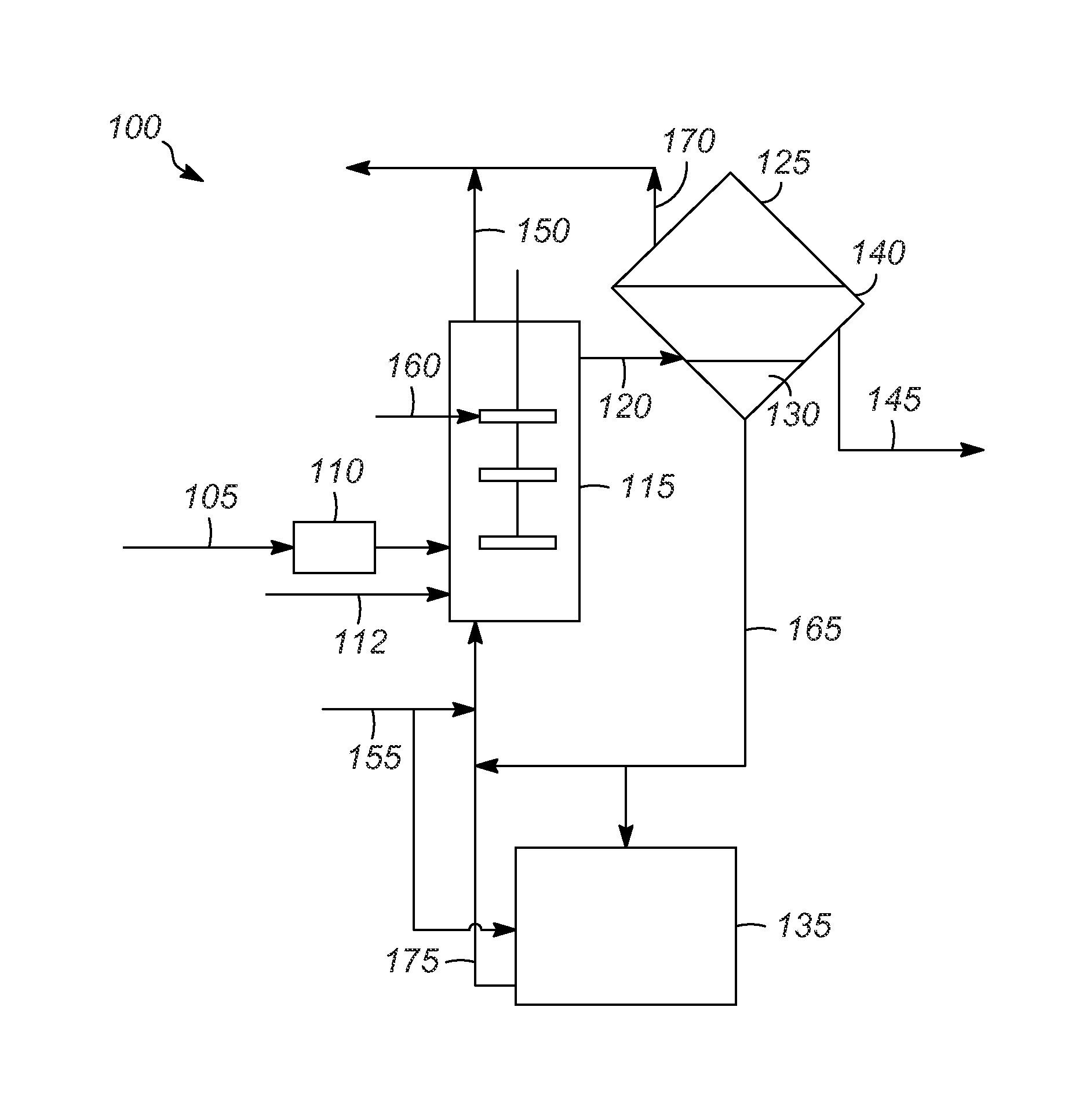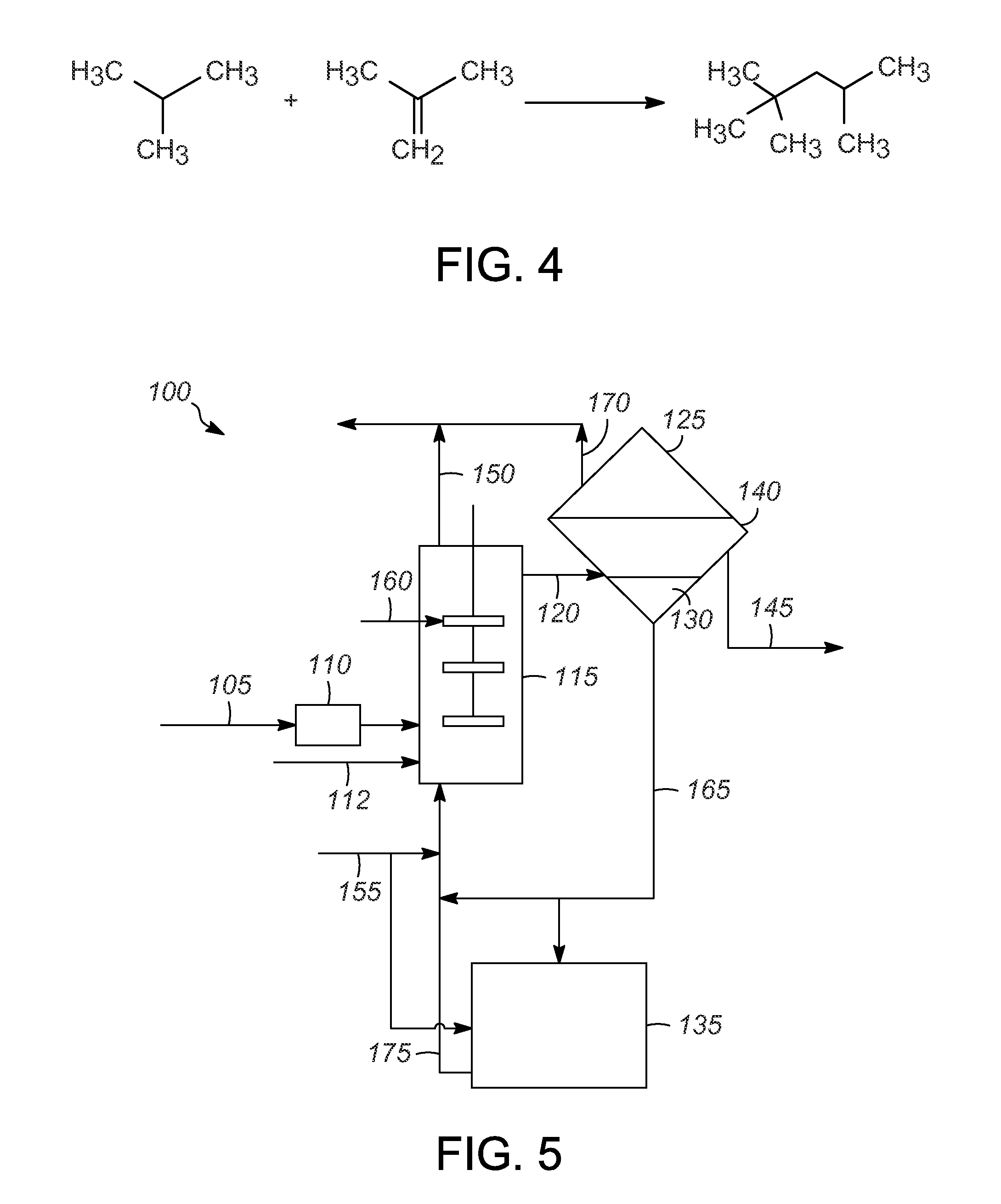Catalytic reverse disproportionation of paraffins using ionic liquids
a reverse disproportionation and paraffin technology, applied in the direction of hydrocarbon preparation catalysts, hydrocarbon by saturated bond conversion, organic chemistry, etc., can solve the problems of increasing the cost of the catalyst, oversupply of refiners with csub>, and utilizing dangerous h
- Summary
- Abstract
- Description
- Claims
- Application Information
AI Technical Summary
Benefits of technology
Problems solved by technology
Method used
Image
Examples
example 1
Experimental Set Up
[0138]The set-up included a 300 mL autoclave equipped with a mechanical stirrer, pressure gauge, thermocouple, dipleg, rupture disc and valves to introduce the feed and withdraw an aliquot for GC analysis. The rupture disc vented to a knock out pot. The house nitrogen passed through a pressure regulator to a high surface sodium column and was then split: feeding to the charger for feed introduction or to a line for various uses (i.e., 2-methyl-2-chloropropane / C5P introduction). The dipleg was constructed such that the height positions it in the paraffin layer. Upon opening the valve, the withdrawn paraffin layer passed through a column of silica, to the GC valve and then through a metering valve into a waste container. The reaction mixture was analyzed using the ASTM UOP690-99 method. The Sisoparaffin was calculated by summing the wt. % contribution of the C4-C8 isoparaffins that are separable using the ASTM UOP690-99 method, but does not include the contributions...
example 2
Synthesis of [(nBu)3P(Hex)][Al2Cl6Br]
[0139]An oven-dried round bottom flask was charged with [(nBu)3P(Hex)][Br]. The material was attached to a rotary evaporator and dried under vacuum at 110° C. for at least 14 h. The dried [(nBu)3P(Hex)][Br] was immediately brought into a nitrogen glovebox and stored there. A synthesis was achieved by massing 17.589 g (47.88 mmol) of [(nBu)3P(Hex)][Br] into an oven-dried flask equipped with a stir bar in the nitrogen glovebox. To this was added 12.775 g (95.81 mmol) of AlCl3 at ambient temperature. The mixture was stirred and the solids slowly reacted over the course of one week to produce a homogenous pale-yellow liquid.
example 3
Synthesis of [1-butyl-1-methylpyrrolidinium][Al2Cl7]
[0140]An oven-dried round bottom flask was charged with [1-butyl-1-methylpyrrolidinium][Cl]. The material was attached to a rotary evaporator, dried under vacuum at 110° C. for at least 14 h. and then sealed under vacuum with a connecting adapter. The dried [1-butyl-1-methylpyrrolidinium][Cl] was immediately brought into a nitrogen glovebox and stored there. A synthesis was achieved by massing 57.14 g (322 mmol) of [1-butyl-1-methylpyrrolidinium][Cl] into an oven-dried flask equipped with a stir bar in the nitrogen glovebox. To this was added 83.93 g (629 mmol) of Al2Cl3 at ambient temperature and the mixture stirred. The solids reacted to produce a homogenous liquid.
PUM
 Login to View More
Login to View More Abstract
Description
Claims
Application Information
 Login to View More
Login to View More - R&D
- Intellectual Property
- Life Sciences
- Materials
- Tech Scout
- Unparalleled Data Quality
- Higher Quality Content
- 60% Fewer Hallucinations
Browse by: Latest US Patents, China's latest patents, Technical Efficacy Thesaurus, Application Domain, Technology Topic, Popular Technical Reports.
© 2025 PatSnap. All rights reserved.Legal|Privacy policy|Modern Slavery Act Transparency Statement|Sitemap|About US| Contact US: help@patsnap.com



